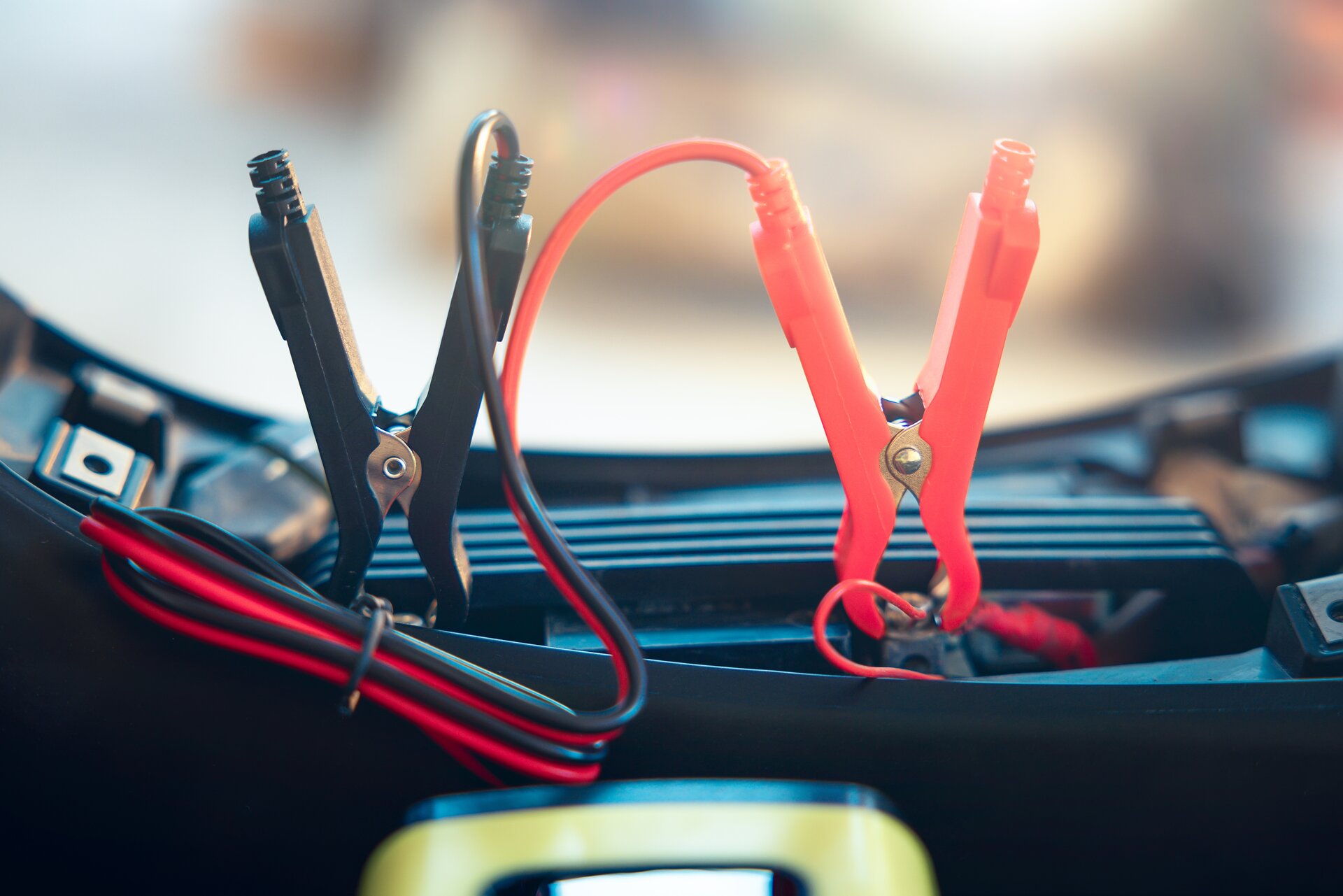- Valley Auto Storage - Los Angeles Discount Car Storage - Vehicle Storage
- 818.389.6799
- CONTACT US
Auto Storage and Trickle Chargers

When a vehicle is left unused for a month the battery can drain or even die. A trickle charger or battery maintainer is recommended for auto storage.
Veteran travelers, including those who go away for months at a time, might have experienced it once – and swore to never let it happen again. “It” is coming home to a dead battery in the car that was running just fine before they left.
It’s a simple fact of car batteries: they go dead when the car isn’t in use. This is quite typical when a car owner fails to use a commercial car storage facility. It’s due to a natural process called self-discharge. This is is the result of several factors, actually. One is internal chemical reactions. Another is called “parasitic drain,” when the electronic systems (clocks, alarms, computers, memory systems) found in most modern cars slowly draw small amounts of power even when the car isn’t being used. Temperatures in the extremes, hot and cold, can accelerate these processes, and an older battery will be more vulnerable to this than one that is newer. Left long enough something called sulfation occurs, which is when lead sulfate crystals form on battery plates. This can be irreversible, and it can happen to electric vehicle (EV) batteries as well as traditional batteries (albeit at a slower rate on EVs).
New or vintage, cars need special attention in storage
Note that this is why storage for antique cars has always required the support of professionals. That said, it’s not just vintage cars that need the expertise of professionals. Affordable car storage companies service all kinds of vehicles for basically the same reason.
There are a few ways to prevent these problems. One is for someone (e.g., a paid professional) to start up the car every few weeks. Another is to disconnect the battery to at least prevent parasitic drain – but the other processes, chemical reactions and temperature extremes, will still be in play.
When those approaches are not necessarily possible, a motorist can leave for a trip with the assurance of a device: a trickle charger or battery maintainer, a standard too for firms providing full-price and discount vehicle storage services.
Battery maintainers for auto storage
A trickle charger is hooked up to the battery, providing a continuous low-level current. A battery maintainer is a somewhat smarter version of a trickle charger in that it prevents overcharging and, in effect, improves battery longevity – because trickle chargers lack a regulating mechanism that can overcharge the battery if left on too long.
The battery maintainer actually has a microprocessor that monitors the charge in the battery, making adjustments in the electrical feed as it determines to be necessary. If the battery is full, it turns into a maintenance or monitoring mode, reactivating only when the self-discharge of the battery (to those parasitic clocks, alarms, and computers) sufficiently requires more juice from the battery maintainers.
If a trickle charger is your only option, ask your car storage experts to set the voltage and amperage that is appropriate for your battery. Also, they should ensure that your car is parked where precipitation or other sources of moisture are not going to affect your car. The charger has a negative terminal, which is black, that needs to ground to a piece of metal on the car (on the frame, a chassis bolt – and absolutely NOT the battery). The positive charger (“alligator clip”) should attach to the battery after the negative charger is grounded.
Your time away should be worry free. And your return home should be as well. Trickle chargers and battery maintainers, managed under the expertise of professionals, make it possible.
Providing discount vehicle storage to the following Los Angeles regions:
Arleta | Bel Air | Beverly Hills | Brentwood | Burbank | Canoga Park | Carson | Century City | Chatsworth | Culver City | Downey | El Monte |
El Segundo | Encino | Gardena | Glendale | Granada Hills | Hawthorne | Hermosa Beach | Inglewood | Lake View Terrace | Lancaster |
Lawndale | Los Angeles | Manhattan Beach | Marina Del Rey | Mar Vista | Mission Hills | North Hills | North Hollywood | Northridge |
Norwalk | Pacific Palisades | Palmdale | Pasadena | Pacoima | Playa Vista | Pomona | Porter Ranch | Rancho Palos Verdes | Redondo Beach |
Reseda | Santa Clarita | Santa Monica | Sherman Oaks | Studio City | Sun Valley | Sunland – Tujunga | Sylmar | Tarzana | Toluca Lake |
Torrance | Valley Village | Van Nuys | Venice | West Covina | West Hills | West Los Angeles | Westwood | Winnetka | Woodland Hills
For discount vehicle storage rates and availability please call 1 (818) 389-6799

We are a vehicle storage facility providing discount indoor and outdoor storage solutions for affordably storing cars, trucks motorcycles and other vehicles.
Find Us
- 9800 Eton Ave.
- Chatsworth, CA
- 91311 USA
Hours
- By Appointment Only
